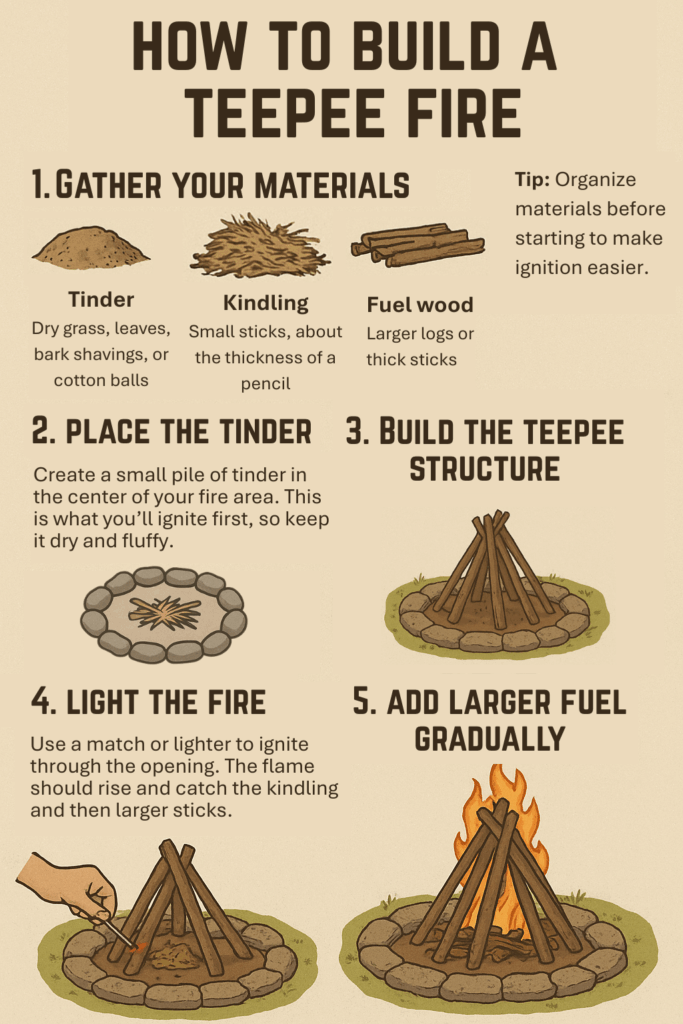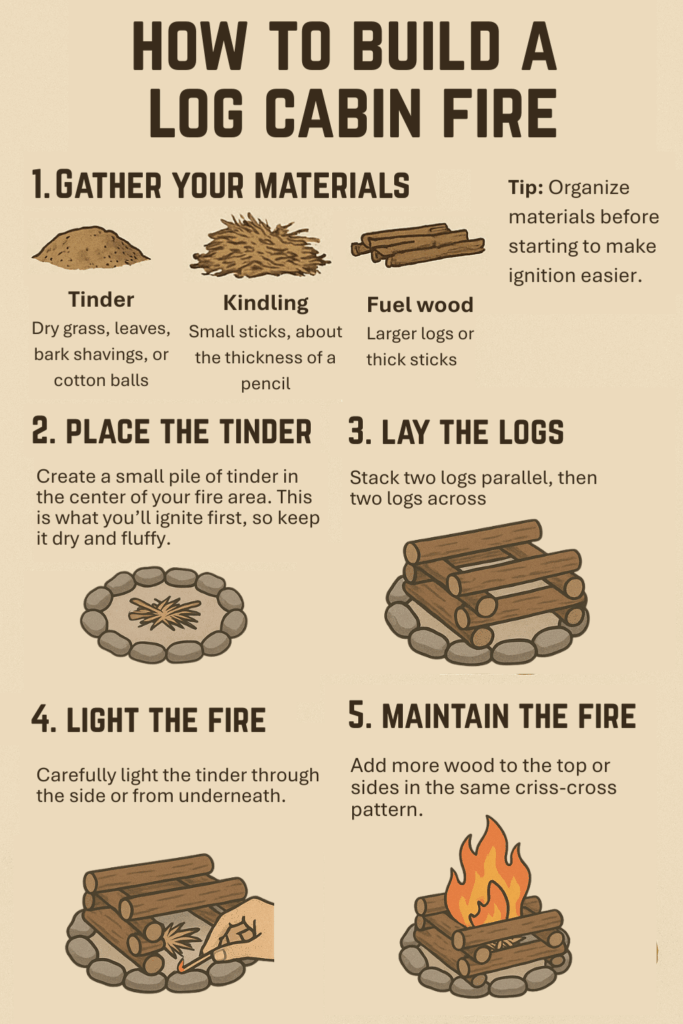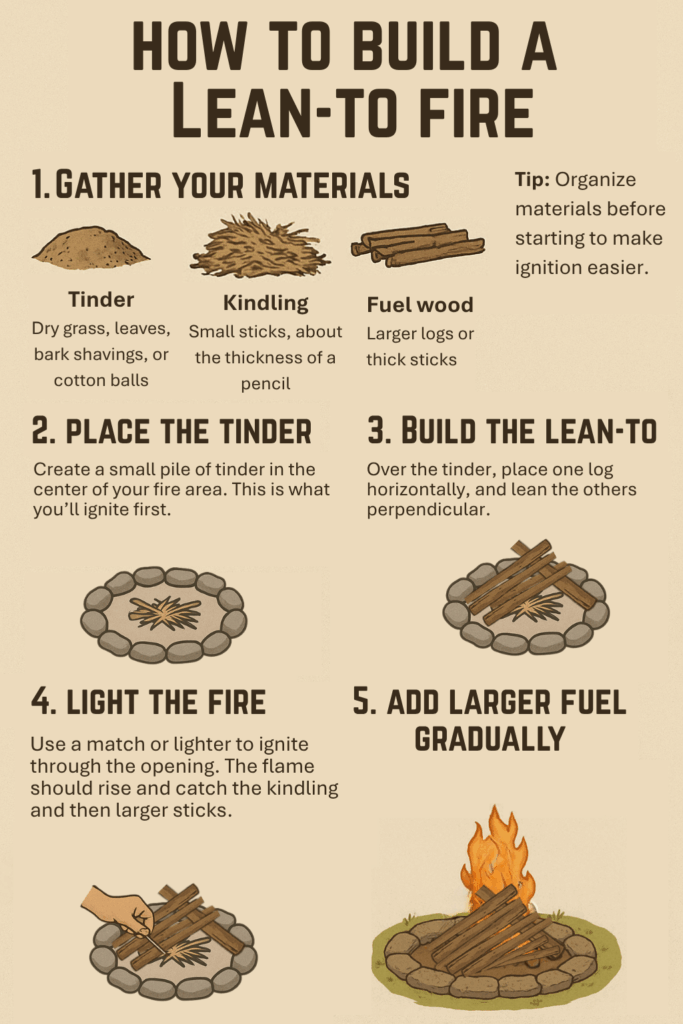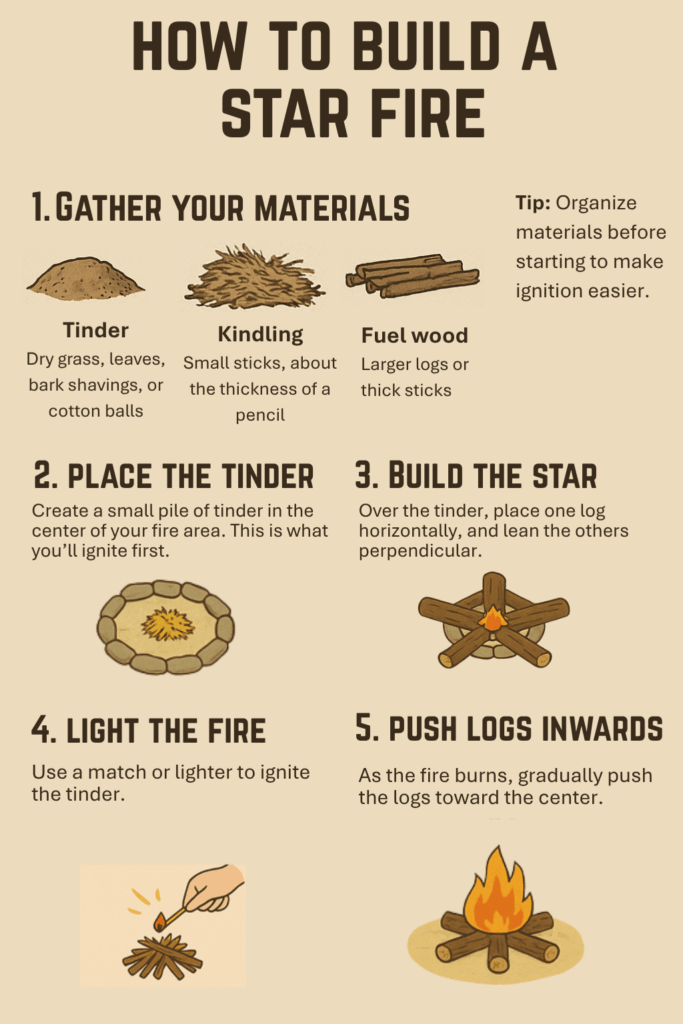You’ll need three types of fuel:
Best practice: Gather 2–3x more wood than you think you’ll need. Fires burn through fuel faster than expected.
Choose one of these proven shapes:
When you’re done:
These are typically easier for wet weather – they protect the core of the fire from rain, and have more of the fuel over the flame to warm and dry it.

These are ideal for cooking as they burn for long periods of time and are less likely to collapse
when compared to other structures

These are one of the quickest and most efficient ways to get your fire going quickly and
ideal for weather conditions that are less than perfect.

This type of fire is efficient when you have limited firewood. It’s built by aligning the ends of
logs and burning them bit by bit.
